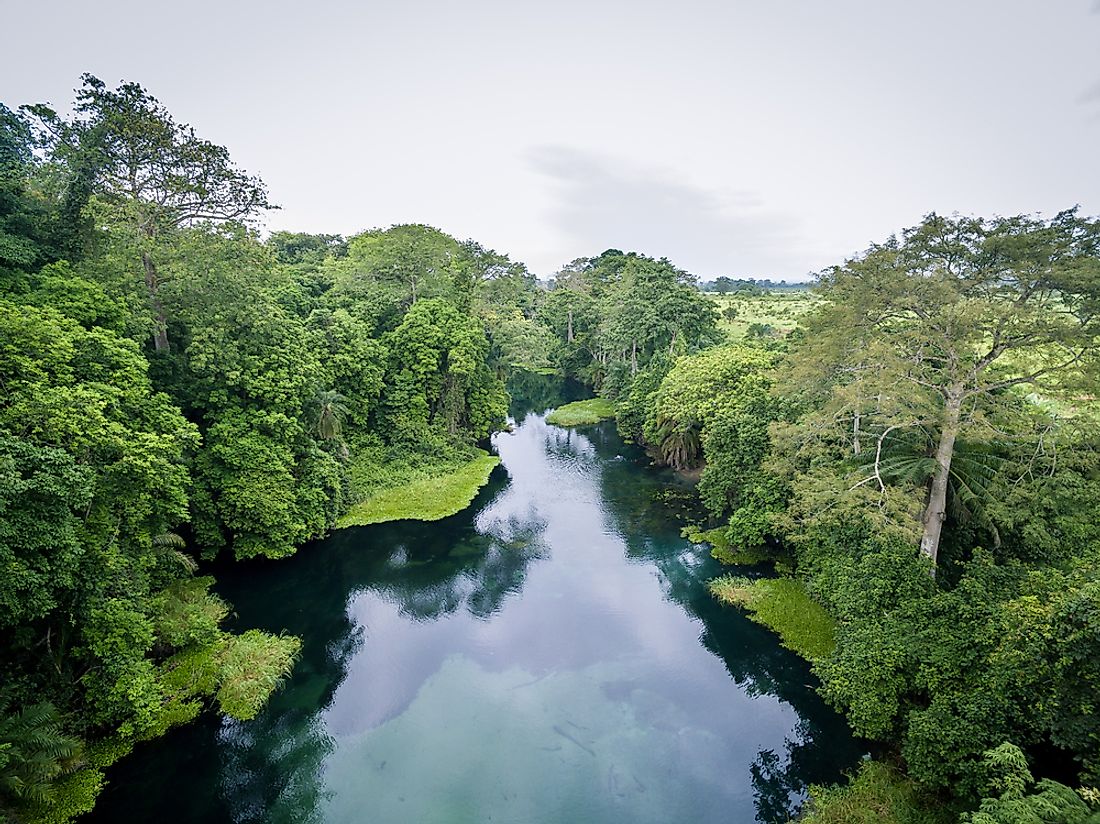The Biggest Industries In The Republic Of The Congo

Also known as West Congo, Congo-Brazzaville, the Congo, ROC, or the Congo Republic, the Republic of the Congo is a nation located in Central Africa. The capital city, which is also the largest city, is Brazzaville. In 2016, the estimated population of the Congo was around 5 million people. The country, which has an area of around 132,000 square miles, had a nominal gross domestic product (GDP) estimate of about $9.210 billion in 2018. This economy is driven by a number of industries with the main ones including petroleum extraction, brewing, palm oil, lumber, cement, soap, mining, cigarettes, and flour. Unfortunately, over the years, the nation has been hit by several problems that have derailed the economy with the main one being civil war.
Petroleum
The petroleum industry has overtaken forestry as the most productive and most crucial source of the nation’s revenue in recent years. As of 2010, the industry was responsible for a whopping 89% of the nation’s exports. In Africa, among the countries that produce crude oil, it is ranked in the seventh position with most of the production happening offshore.
The nation emerged as a major producer of oil in the later stages of the 1970s although production expanded majorly in the 1990s. However, as oil wells matured in the 20th century, production went down significantly. Since then, new projects have been started that have revived the industry. An example of such a project is the Moho-Bilondo field. In Sub-Saharan Africa, Congo ranks fifth in terms of oil production. At the end of 2011, the nation had about 1.94 billion barrels of proven oil reserves. Using the production rate from that time, those reserves were calculated to last for almost 18 years. Most of the firms in the industry are run by foreign companies such as Total and the Congolaise de Raffinage (Coraf). Aside from oil, the nation also produces significant quantities of natural gas in Africa. Recent years have seen increased amounts of discovered oil reserves that are expected to propel production forward in the coming years.
Minerals
Aside from petroleum, the Congo has some proven mineral reserves such as alluvial diamonds closer to the border between Congo and the Central African Republic. Iron and iron ore have also been discovered in other places such as Mayoko-Moussondji, Mayoko-Lekoumou, parts of the Archaean Congo Craton, and a few other places. Just like petroleum mining above, the companies involved are foreign although there is nothing major going on currently. The country introduced a mining code in April 2005, which gives foreign companies control over mining operations. However, the government maintains a 10% stake and holds the right to buy more equity. Newer laws have been introduced into the industry, which is under the Department of Mines and Geology.
Forests
Congo has vast amounts of forest resources in the form of the massive Congolese rainforests, which are the second-largest in the world today. These rainforests cover a number of countries such as the Democratic Republic of the Congo, the Republic of the Congo, Gabon, Cameroon, and the Central African Republic. In the Congo, these forests occupy the northern as well as the central parts of the nation.
About 80% of the nation’s rainforest can be utilized for commercial gain. To provide some perspective on how huge it is, the estimated rainforest cover in Congo is around 22.5 million hectares, which is around 60% of the nation’s total area. One of the most commercially active trees is known as Okoume, which is mainly used for producing plywood. Okoume accounts for about half of the nation’s timber production. About 90% of the country’s timber exports are crude logs while the remaining 10% is processed wood. Aside from plywood, other processed timbers from the country are plants and furniture. Most of these lumber exports, about 90% of them, are exported to China.
Presently, there are several things being done by the government to improve the industry. These efforts include working with international firms like Forest Monitor. These partnerships help to develop and improve aspects like responsible and sustainable logging practices, coming up with better forest laws, enforcing transparency in the industry, and coming up with a better tax code.
Unfortunately, there is a high rate of deforestation that is putting the industry in serious jeopardy. A study conducted by experts from the University of Maryland concluded that the forests could be gone by 2100. Between 2000 and 2014, satellite data shows that the Congo basin lost a total of 63,706 square miles of forest cover. This area is bigger than the area of Bangladesh.











